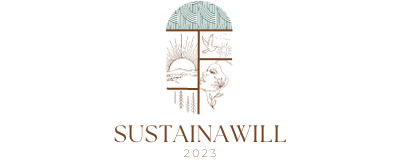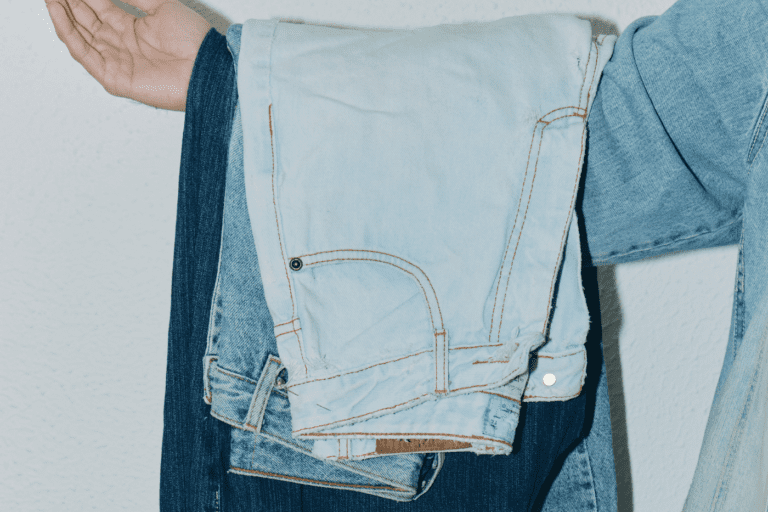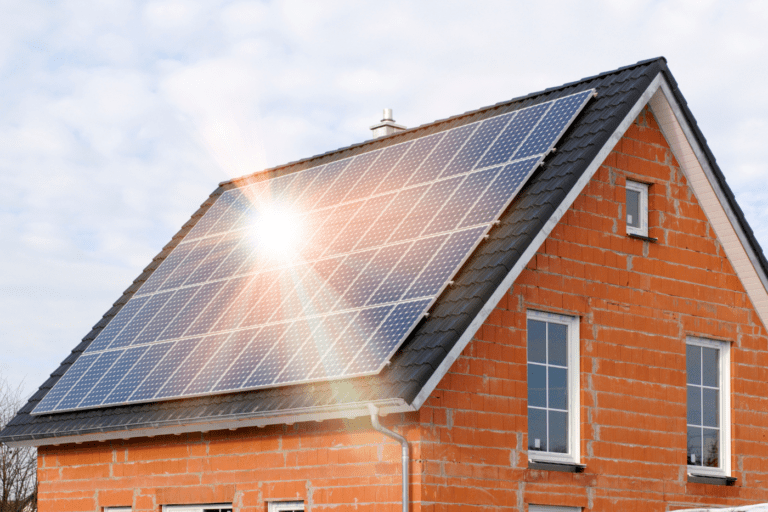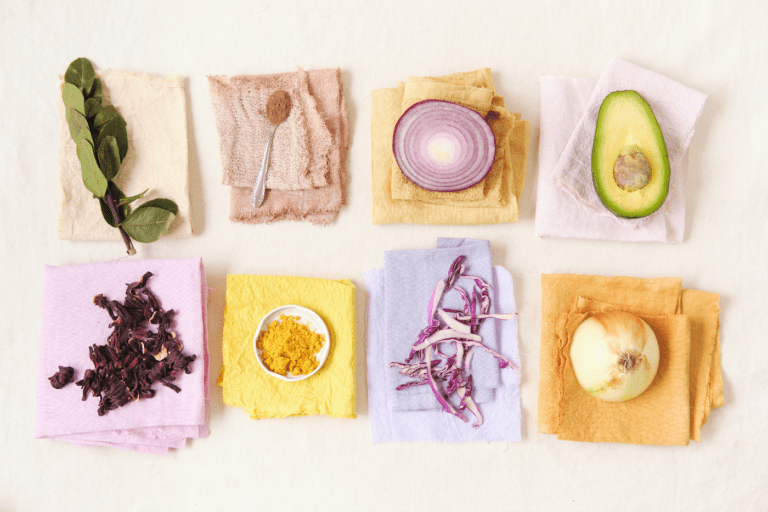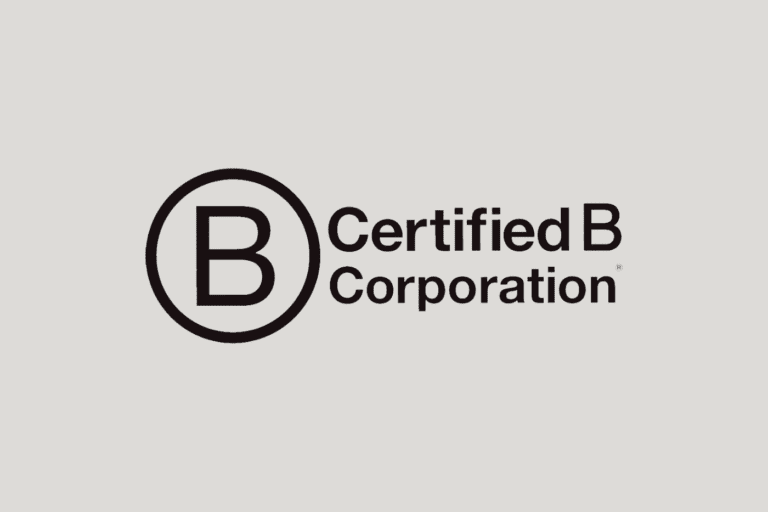Are you eyeing some linen pieces but are not quite sure about their environmental impact? Let’s explore together how sustainable linen really is!
What is Linen?
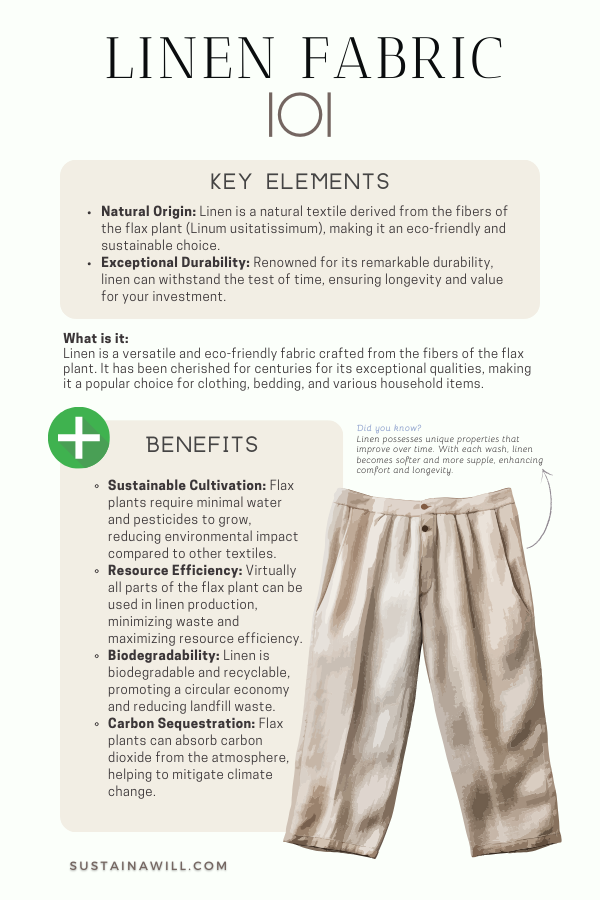
It is a wonderful natural fabric that you might have come across, but perhaps don’t know much about.
Linen is made from the fibers of the flax plant (Linum usitatissimum) and is one of the oldest fabrics known to humankind, with a history dating back thousands of years. So, you could definitely say that it’s tried and true.
You’ll find linen in all sorts of things like:
- clothing
- bedding
- tablecloths
Pros of Linen
One of the cool things about linen is its texture—it’s crisp and has this lovely natural shine to it. Plus, it’s great for warm weather because it’s super breathable and does an excellent job of wicking away moisture.
Cons of Linen
But as with everything it’s not all sunshine and rainbows—linen does tend to wrinkle easily, so keep that in mind.
How is linen made?
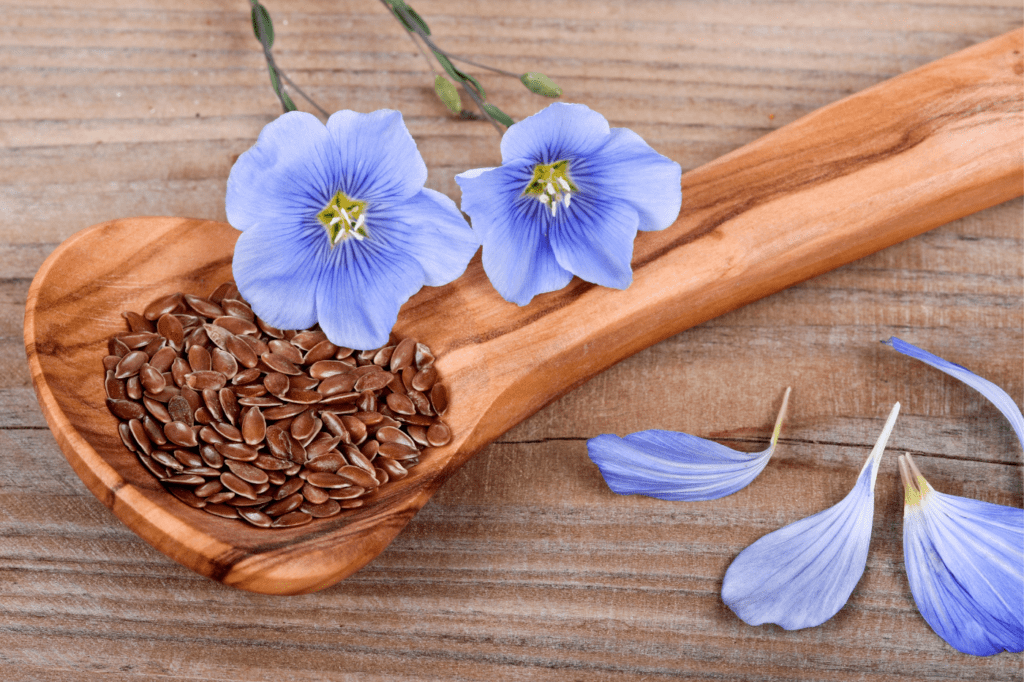
As already mentioned, linen comes from the flax plant. Yep, the same plant that gives us those nutritious flaxseeds! Farmers grow flax, and when it’s ready, they harvest it.
1. Retting
Then comes the first step—retting. Retting is the process of soaking the flax stems in water to loosen the fibers from the woody stalks.
There are different methods for this, including dew retting (letting nature do its thing) or water retting (submerging the flax in water).
2. Scrutching
Once those fibers are all nice and loose, they’re ready for the next step—scutching. This is where the flax stems are beaten to remove the woody bits and separate the fibers.
3. Heckling
After scutching, it’s time for heckling.
It involves combing the fibers to remove any remaining impurities and align them neatly. This step gives us smooth, lovely linen fibers.
4. Spinning
Finally, it’s spinning time! The heckled fibers are spun into yarn or thread, which can then be woven into fabric.
This, of course, is a short overview of how linen is made, but if you’re interested in a detailed explanation, check out this detailed YouTube vid from Libeco Belgian Linen.
And voilà, you’ve got yourself some beautiful linen ready to be turned into clothing, bedding, or whatever your heart desires!
Can linen be sustainable?
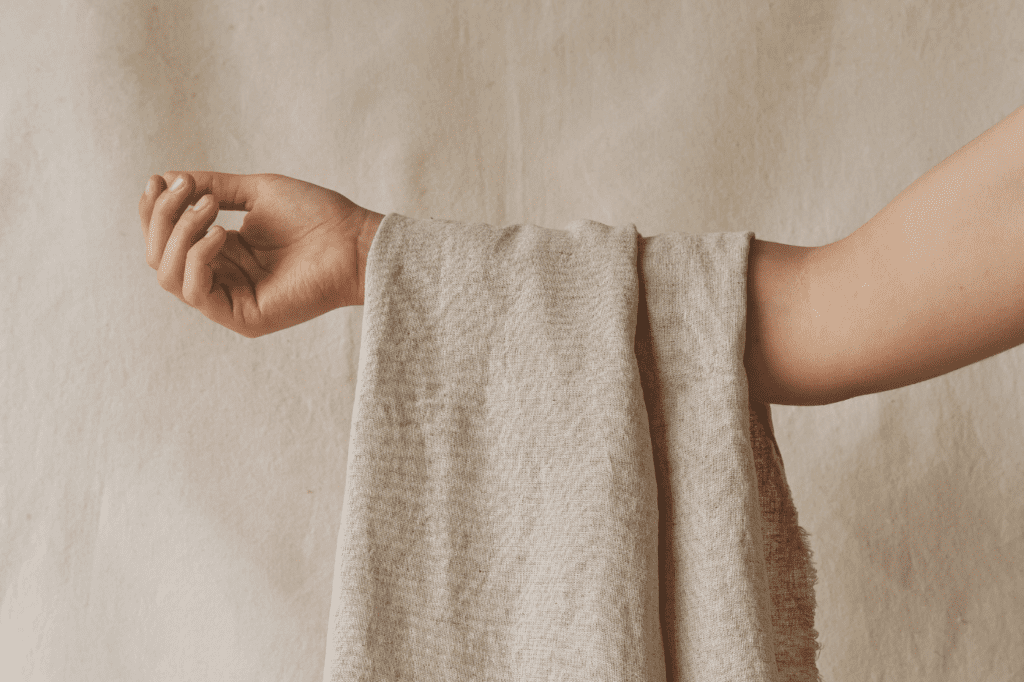
Yes, linen is definitely an eco-friendly choice and it is sustainable.
Linen is considered one of the more sustainable fabrics out there, and for good reason:
1. Natural and Resilient
It all starts with the flax plant itself. Flax is a hardy little thing that doesn’t need much water or pesticides to thrive, unlike thirsty crops like cotton. This means less strain on water resources and fewer harmful chemicals entering the environment.
2. Minimal Waste
But it doesn’t stop there. When it comes time to harvest the flax, almost every part of the plant gets used. From the fibers used to make linen to the seeds that can be pressed for oil or used in animal feed, very little goes to waste.
3. Durable and Long-lasting
And let’s talk about durability. Linen is tough stuff! It can withstand years of use and multiple washes without losing its quality. This means fewer trips to the store for replacements, reducing your overall environmental footprint.
4. Recyclable and Biodegradable
But perhaps the most significant point in linen’s favor is its biodegradability. Unlike synthetic fabrics that sit in landfills for centuries, linen will naturally break down over time, leaving behind minimal waste.
Potential Drawbacks of Linen
Of course, like anything, there are factors to consider. The production process can still have environmental impacts, especially if it relies heavily on chemical treatments or inefficient manufacturing practices.
Here are some tips to help you spot these issues:
- Research the Manufacturer: Look into the practices of the brand or manufacturer producing the linen. Are they transparent about their production processes? Do they prioritize sustainability and ethical practices? Brands that are committed to minimizing their environmental impact are likely to provide detailed information about their manufacturing practices.
- Check for Certifications: Look for sustainability certifications such as Global Organic Textile Standard (GOTS) or OEKO-TEX Standard 100. They ensure that the linen has been produced using environmentally friendly and socially responsible methods, with strict criteria for chemical use and waste management.
- Inquire About Chemical Treatments: Ask about the chemicals used in the production of the linen. Are they using harsh chemicals, such as bleaches or synthetic dyes, that can harm the environment? Ideally, linen should be processed using natural and biodegradable substances to minimize pollution and ecological damage.
- Assess Energy and Water Usage: Consider the energy and water usage associated with linen production. Are there measures in place to reduce energy consumption and water usage, such as implementing energy-efficient machinery or water recycling systems?
We get it, researching sustainable brands can be overwhelming. That’s why we’ve done the work for you! Check out our curated list of the 5 Best Sustainable Linen Clothing Brands.
Overall, when compared to many other fabrics on the market, linen shines as a sustainable choice.
Can Vegans Wear Linen?
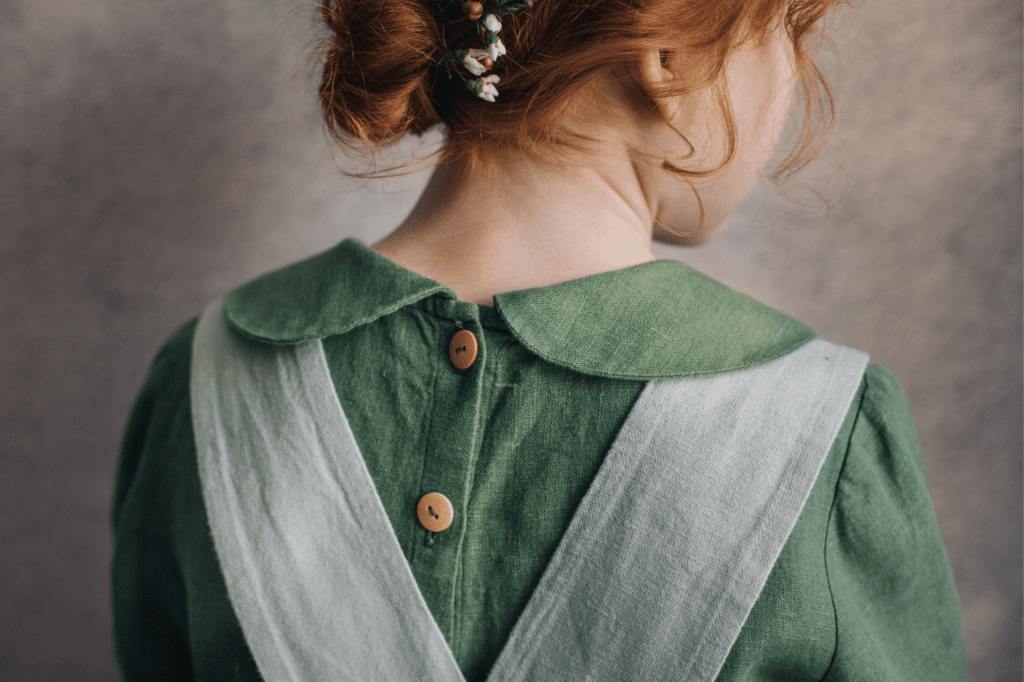
Absolutely! Linen is a plant-based fabric made from the fibers of the flax plant, making it 100% vegan-friendly.
Unlike materials such as wool or silk, which come from animals, linen is cruelty-free and aligns with vegan principles.
The cultivation of flax plants and the production of linen do not involve any exploitation or harm to animals. Flax is simply grown in fields, harvested, and processed to extract the fibers used to create linen fabric. No animals are used or harmed in this process.
So, if you’re a vegan looking for stylish and sustainable clothing options, you can enjoy the benefits of this versatile fabric while staying true to your ethical values.
And don’t forget to check out The 5 Best Sustainable Linen Clothing Brands to Buy Now for our curated selection of eco-conscious options.
How to care for linen clothing?
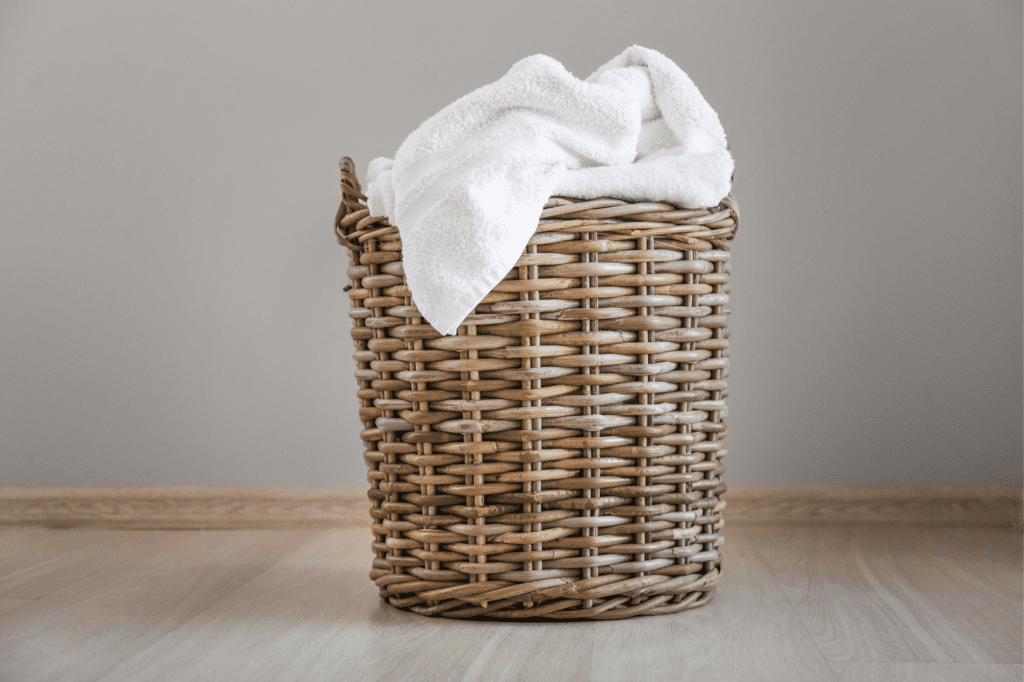
Taking care of your linen clothing is essential to ensure it stays looking fresh and crisp.
Here’s a simple guide to help you keep your linen garments in top condition:
- Read the Label: Always check the care label on your linen clothing for specific instructions from the manufacturer. Different blends or finishes may have unique care requirements.
- Gentle Washing: When washing linen, opt for a gentle cycle on your washing machine using cold or lukewarm water. Avoid using harsh detergents or bleach, as they can weaken the fibers and cause discoloration.
- Use a Mild Detergent: Choose a mild detergent specifically formulated for delicate fabrics. Avoid using fabric softeners, as they can leave residue on linen and reduce its absorbency.
- Air Dry: After washing, air dry your linen clothing by laying it flat or hanging it on a padded hanger. Avoid wringing or twisting linen, as this can cause wrinkles and distort the fabric’s shape.
- Ironing: For a crisp look, iron your linen clothing while it’s still slightly damp. Use a medium to high heat setting and steam if necessary. If you prefer a more relaxed, casual look, you can embrace the natural wrinkles of linen and skip the ironing.
- Storage: Store your linen clothing in a cool, dry place away from direct sunlight. Avoid hanging linen garments for long periods, as this can cause stretching. Instead, fold them neatly to help maintain their shape.
- Stain Removal: Attend to stains promptly by spot-treating them with a gentle stain remover or a mixture of water and mild detergent. Avoid rubbing vigorously, as this can damage the fabric. Blot the stain gently and rinse with cold water.
With proper maintenance, your favorite linen pieces will continue to be a staple in your capsule wardrobe season after season.
Takeaway
Linen is a sustainable, versatile, and timeless choice for your wardrobe and home.
From its origins in the flax plant to its eco-friendly properties and easy care instructions, linen offers a winning combination of style, durability, and environmental consciousness.
By choosing linen, you’re not only investing in quality and comfort but also making a positive impact on the planet.
So, whether you’re dressing up for a special occasion or sprucing up your living space, embrace the beauty and benefits of linen with confidence.
![Pinterest optimized image showing the post title and web address for - [x] What is Linen and How Sustainable is it Really?](https://sustainawill.com/wp-content/uploads/2024/02/49.png)
![Pinterest optimized image showing the post title and web address for - [x] What is Linen and How Sustainable is it Really?](https://sustainawill.com/wp-content/uploads/2024/02/50.png)
